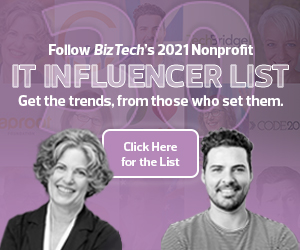In a piece for TechSoup, author Josh Kligman notes that pulling out the big numbers is a perfect starting point for many nonprofits trying to make an impact with their communications strategies.
But nonprofits stand to gain the most from the deeper analytics. As a starting point, Kligman suggests looking into the amount of time your employees and volunteers spend in the community, and on specific projects. These data points present opportunities to build a more compelling message for donors.
“The more you can find unique metrics for your communications department to make your brand stand out to potential corporate donors, for instance, the more your marketing assets have a chance to look and feel different and get noticed faster,” Kligman says.
Build Around Metrics You Can Act on
Just citing big numbers without tying them to your strategic goals might limit your ability to improve on them in the future. That’s why it’s important to set actionable goals for your metrics. Your KPIs should reinforce your broader organizational goals, and that data can help your nonprofit make better, more informed business decisions.
“You should also make sure your KPIs are realistic,” Nonprofits Decoded explains. “Setting a KPI target or goal that is unachievable and unrealistic is a good way to ruin your team’s motivation before they begin.”
The website suggests tracking donor growth, donor retention rate, email performance, landing page conversion rate and fundraising ROI, among other data points.
MORE FOR NONPROFITS: How the industry has emerged from two years of disruptions.
Your organization will know the KPIs that make the most sense for you. Once you decide on them, the goal will be to find effective ways to track those data points. Business intelligence tools such as Tableau and Microsoft Power BI can pull data from a variety of sources, such as a data store in the cloud or an email marketing tool, and help make the information easier to interpret and build upon.
How Nonprofits Should Bring in Big Data
You can use the data that you know about to build against your goals, but most organizations have far more information at their fingertips than they realize.
That’s where Big Data tools can come into play. Digging through internal records and public records alike helps to highlight potential strategies that nonprofits can use to more effectively serve their communities.
By leveraging machine learning and artificial intelligence, Big Data could help you uncover hints about donor behavior that can create opportunities for better targeting. Additionally, it can enable nonprofits to build forecasts based on past data and help create some predictability around their larger goals.
There may be bigger questions to ask when it comes to Big Data. Ethical concerns, for obvious reasons, are a North Star for many charitable groups, and there are always the broader questions about implementation. Those questions might lead you to take a more careful approach with Big Data, even if the potential to succeed with it is high.
But when the approach and the message align, the final result can help maximize your mission, something organizations like Team Rubicon have excelled at.
In many ways, good data that’s focused on ROI and serving the mission can stream through a nonprofit, uncovering opportunities for efficiency and helping chart a path forward that’s driven by in-depth insights from the past.











